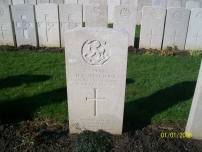| First Name: | Harry Edward | Last Name: | SHATTOCK | |
|---|---|---|---|---|
| Date of Death: | 07/08/1917 | Lived/Born In: | Blackheath | |
| Rank: | Captain | Unit: | Royal West Kent7 | |
| Memorial Site: | ||||
Current Information:Age-27 11, Eliot Hill, Blackheath Lijssenthoek Military Cemetery, Belgium
Third Battle of Ypres This was a campaign fought between July and November 1917 and is often referred to as the Battle of Passchendaele, a village to the north-east of Ypres which was finally captured in November. It was an attempt by the British to break out of the Ypres salient and capture the higher ground to the south and the east, from which the enemy had been able to dominate the salient. It began well but two important factors weighed against them. First was the weather. The summer of 1917 turned out to be one of the wettest on record and soon the battlefield was reduced to a morass of mud which made progress very difficult, if not impossible in places. The second was the defensive arrangements of concrete blockhouses and machine gun posts providing inter-locking fire that the Germans had constructed and which were extremely difficult and costly to counter. For four months this epic struggle continued by the end of which the salient had been greatly expanded in size but the vital break out had not been achieved. Battle of Pilckem Ridge (31st July-2nd August) This was the opening attack of Third Ypres and began at 3.50am on 31st July when British and French troops launched their offensive to break out of the Ypres salient. The day had mixed results. To the north the Pilckem Ridge was captured but there was less success further south along the Gheluvelt Ridge, where a combination of stiff German resistance and low cloud, which hindered observation, meant that only the first objectives were captured. Further attempts to push on were stopped in their tracks by specialist German counter attack divisions and resulted in a 70% casualty rate among the British troops. Then in the afternoon, the rain came and under the weight of shells falling on it, the battlefield soon became a quagmire. Over the next two days, suffering the most appalling conditions in the mud and the rain, the troops had to fight off numerous German counter attacks.
On 31st July, 1917, 55 Brigade of 18th Division were in reserve and the 7th Royal West Kent battalion spent the day at New Dickebusch Camp. During the night of 2nd-3rd August, 18th Division relieved 30th Division in the new front line and 7th Royal West Kent then spent the next four days in the trenches during which time they suffered some casualties, mainly from shell fire. One of these was Harry Shattock who died from wounds on 7th August. |
||||
| « Back to Search Results | ||||
| If you think any of the information shown here is incorrect, Click Here to submit your amends and comments | ||||




